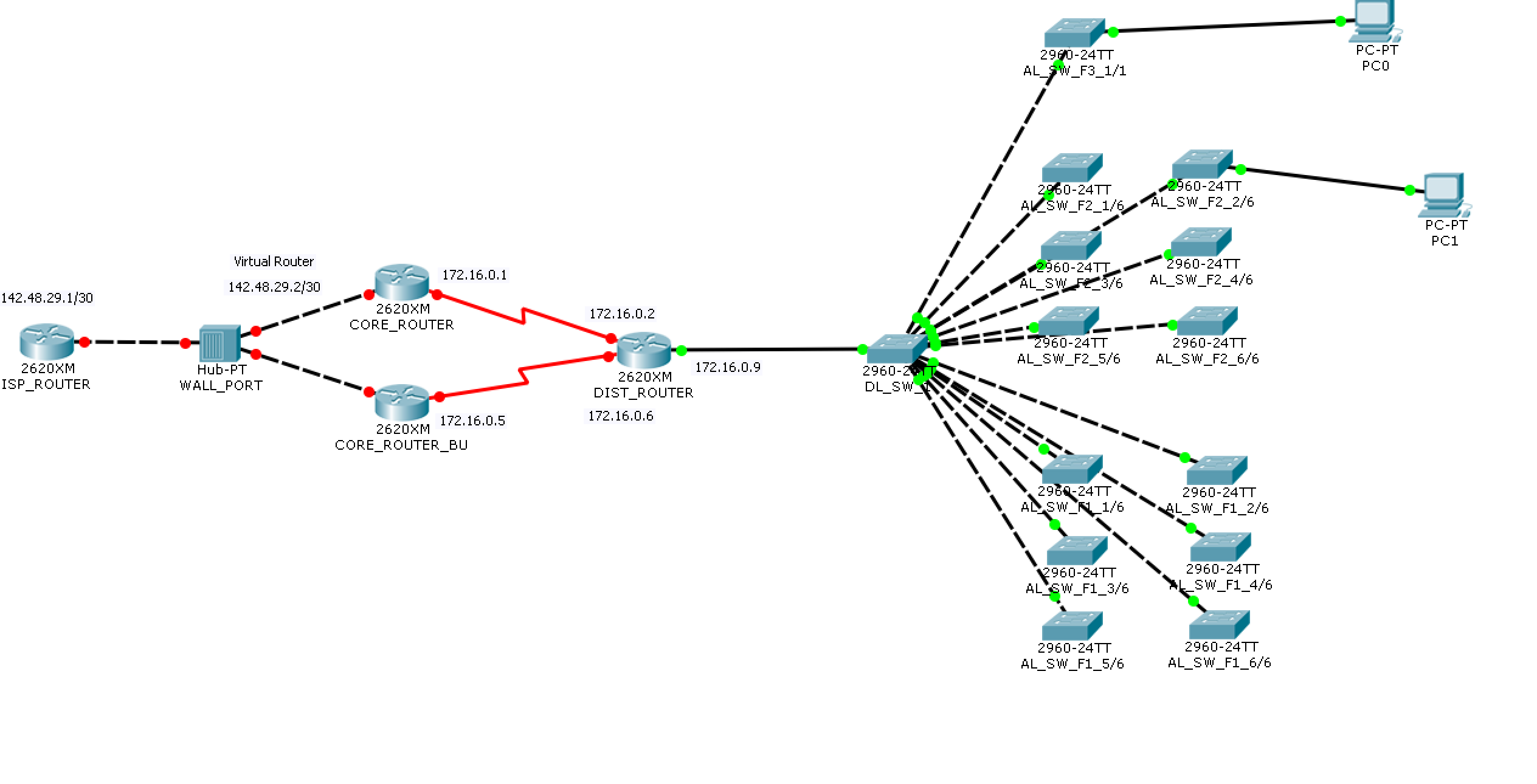- Cisco Community
- Technology and Support
- Networking
- Switching
- That's great. Thanks for the
- Subscribe to RSS Feed
- Mark Topic as New
- Mark Topic as Read
- Float this Topic for Current User
- Bookmark
- Subscribe
- Mute
- Printer Friendly Page
- Mark as New
- Bookmark
- Subscribe
- Mute
- Subscribe to RSS Feed
- Permalink
- Report Inappropriate Content
12-17-2015 03:49 PM - edited 03-08-2019 03:08 AM
I am in the middle of planning a Small Enterprise Network in Cisco Packet Tracer. I am trying to get my sub interfaces working so my VLANs can communicate. When I try and apply some of my IP Addresses. I says that some are overlapping. Could somebody help me with what this is? I understand subnets and how they work, but I cannot see how they are overlapping. If you need anymore information, please please ask. I need help!

The ones I have highlighted yellow are the ones which say there are overlapping
Also, this is a general appearance of my network. I'm setting up my sub interfaces on DIST_ROUTER using the following CLI:
int fa0/0.101
encap dot1q 101
ip address X.X.X.X X.X.X.X
Then repeat

Solved! Go to Solution.
- Labels:
-
Other Switching
Accepted Solutions
- Mark as New
- Bookmark
- Subscribe
- Mute
- Subscribe to RSS Feed
- Permalink
- Report Inappropriate Content
12-17-2015 08:08 PM
You cannot just go from where your last subnet left off if you use a different subnet mask ie.
172.16.0.12/29 is not a subnet. The actual subnet is 172.16.0.8/29 but you can see you have already used that subnet.
If you are unsure how that works /29 = 255.255.255.248. Take the first non 255 octet and subtract from 256 ie.-
256 - 248 = 8 so with that subnet mask your networks go up in 8.
And 12 is not a multiple of 8 so that cannot be the subnet. The router will work it out as 172.16.0.8/29 because 172.16.0.12 falls within that range.
To split up a class C into variable length subnets always start with the largest subnet first and then work your way down ie.. your /26 should be first, then your /27s, /29's and then 30's eg.
172.16.0.0/26
172.16.0.64/27
172.16.0.96/27
172.16.0.128/29
172.16.0.136/29
etc..
If you work them out in that order it will work properly. If you try and do it your way and mix up the subnet masks it doesn't work as well and you end up wasting IPs.
Jon
- Mark as New
- Bookmark
- Subscribe
- Mute
- Subscribe to RSS Feed
- Permalink
- Report Inappropriate Content
12-17-2015 08:08 PM
You cannot just go from where your last subnet left off if you use a different subnet mask ie.
172.16.0.12/29 is not a subnet. The actual subnet is 172.16.0.8/29 but you can see you have already used that subnet.
If you are unsure how that works /29 = 255.255.255.248. Take the first non 255 octet and subtract from 256 ie.-
256 - 248 = 8 so with that subnet mask your networks go up in 8.
And 12 is not a multiple of 8 so that cannot be the subnet. The router will work it out as 172.16.0.8/29 because 172.16.0.12 falls within that range.
To split up a class C into variable length subnets always start with the largest subnet first and then work your way down ie.. your /26 should be first, then your /27s, /29's and then 30's eg.
172.16.0.0/26
172.16.0.64/27
172.16.0.96/27
172.16.0.128/29
172.16.0.136/29
etc..
If you work them out in that order it will work properly. If you try and do it your way and mix up the subnet masks it doesn't work as well and you end up wasting IPs.
Jon
- Mark as New
- Bookmark
- Subscribe
- Mute
- Subscribe to RSS Feed
- Permalink
- Report Inappropriate Content
12-18-2015 01:20 AM
Discover and save your favorite ideas. Come back to expert answers, step-by-step guides, recent topics, and more.
New here? Get started with these tips. How to use Community New member guide